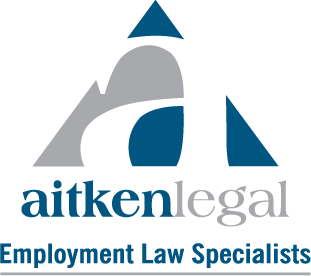ALERT!
One more week until JobKeeper 2.0 takes effect – are you ready?
The current JobKeeper Payment of $1,500 per fortnight will cease on 27 September 2020 and from 28 September 2020, for those eligible employees and employers, the JobKeeper Payment will be reduced in two stages, and will move to a ‘two-tiered system’. The first reduction will take effect from 28 September 2020, and the second reduction will take effect from 4 January 2021 as follows:
Extension period 1 – From 28 September 2020 to 3 January 2021
- Tier 1: $1,200 per fortnight (before tax)
- Tier 2: $750 per fortnight (before tax)
Extension period 2 – From 4 January 2021 to 28 March 2021
- Tier 1: $1,000 per fortnight (before tax)
- Tier 2: $650 per fortnight (before tax)
The criteria for determining whether an eligible employee falls into Tier 1 or Tier 2 will depend on the number of hours:
- Tier 1: This rate will apply for all eligible employees who worked in the business for 80 hours or more in the 28 days before either 1 March 2020 or 1 July 2020 (whichever period is more favourable to the employee); or
- Tier 2: This rate will apply to all other eligible employees – so essentially those employees who worked less than 80 hours in the 28 days before 1 March or 1 July 2020.
Qualifying employers will be required to nominate which payment rate they are claiming for each of their eligible employees.
The test for whether an employer is a qualifying employer for Jobkeeper 2.0 has become more onerous, with an additional test being added, which requires employers to establish the required decline in actual GST turnover, rather than projected turnover, in the relevant quarter. Employers should be seeking advice from their accountants as to this eligibility for Jobkeeper 2.0.
Qualifying Employers
A qualifying employer under the Act is an employer who meets (or continues to meet) the eligibility requirements to receive JobKeeper Payments after 28 September 2020. Qualifying employers will be able to access existing JobKeeper flexibilities which will continue to apply unchanged in most respects.
Specifically, this means a qualifying employer will have the ability to give (or maintain) directions that reduce eligible employee hours, change their duties / location of work, and reach agreement on days and times of work.
It is important to remember that if, for example, an employer wants to further decrease an employee’s hours to meet the new Jobkeeper Payment (or increasing hours but not to the employees pre-COVID hours), then the employer will need follow the consultation requirements outlined in the Jobkeeper Legislation, and issue / re-issue Jobkeeper Stand Down Directions relevant to that change in hours. Employers should consider taking professional advice regarding obligations on Jobkeeper Stand Down Directions.
It is also important to note that ability under the Jobkeeper legislation to reach agreement on taking annual leave with your employees and have them consider that request and not unreasonably refuse, will be repealed from 28 September. This also means that any agreement to take annual leave which extends beyond 28 September, will no longer be enforceable under the legislation. However employees and employers will retain the usual ability to reach agreement on the taking of annual leave, but without the additional protection of it being essential that the employee consider the request to take annual leave and not unreasonably refuse.
Legacy Employers
Jobkeeper 2.0 does introduce a new concept of a ‘Legacy Employer’.
A Legacy Employer under the Act is an employer who is not eligible for the JobKeeper Payment from 28 September, but meets the following legacy employer requirements:
- The employer must have been eligible for Jobkeeper payments for the employee before 28 September 2020; and
- The employer must demonstrate a decline in turnover of 10% or more in a designated quarter and must obtain a 10% decline in turnover certificate (which we understand can be obtained from your accountant)
A legacy employer will be able to give a JobKeeper Stand Down Direction (among other directions and agreements), however the scope of the Jobkeeper Stand Down Direction able to be given has drastically changed, and the consultation requirements for giving the direction has also become more onerous. This is an area where prospective Legacy Employers should seek professional advice.
For advice regarding your obligations under JobKeeper 2.0, please contact one of Aitken Legal’s specialist employment lawyers today.
Disclaimer: The information contained this article is general and intended as a guide only. Professional advice should be sought before applying any of the information to particular circumstances. While every reasonable care has been taken in the preparation of this update, Aitken Legal does not accept liability for any errors it may contain. Liability limited by a scheme approved under professional standards legislation.
